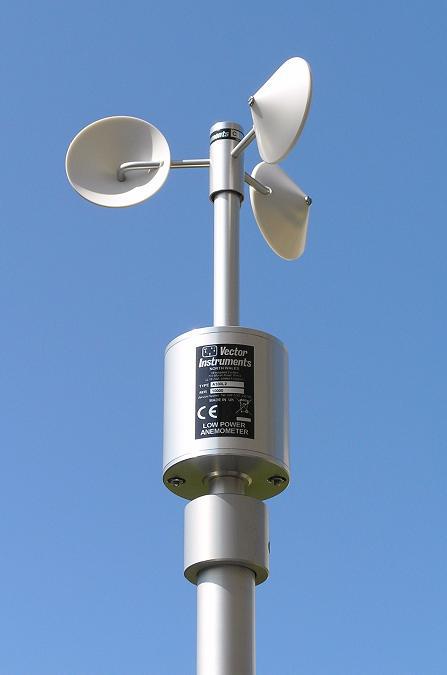Expert Tips for Calibrating Your Anemometer for Optimal Performance
Expert Tips for Calibrating Your Anemometer for Optimal Performance
Blog Article
All You Required to Know Concerning Anemometers: Just How They Function, Why They Matter, and Where to Make use of Them
Anemometers, however commonly ignored in the world of clinical instruments, play an important role in different fields, using useful insights right into wind rate and air flow patterns. Comprehending the technicians behind these devices is important for any individual seeking to harness the power of this information. From meteorologists tracking climate patterns to engineers creating structures with wind tons in mind, the applications of anemometers are varied and far-reaching. As we explore the ins and outs of anemometer modern technology, we will certainly uncover the inner functions of these gadgets, their importance, and the vital factors to consider when choosing the appropriate anemometer for specific applications.

Anemometer Fundamentals
An important instrument utilized to determine wind speed and instructions, the anemometer plays a critical role in meteorology and different sectors. An anemometer generally is composed of three or four cups that revolve in the wind, a vane that points right into the wind, and sensing units to track the turnings or movements.
There are various kinds of anemometers offered, including cup anemometers, vane anemometers, hot-wire anemometers, and sonic anemometers, each with its special attributes and applications. Mug anemometers are frequently made use of for basic wind speed measurements, while vane anemometers are chosen for directional dimensions.
Principles of Anemometer Procedure
Structure on the foundational understanding of anemometer essentials, the concepts of anemometer procedure illuminate the technicians behind wind speed and instructions dimensions. Anemometers operate the concept of air movement influencing a sensing unit, triggering it to turn. Mug anemometers, for example, have 3 or more cups that capture the wind, causing them to rotate faster as the wind rate rises. The rotation rate is after that exchanged a wind speed measurement. Vane anemometers, on the other hand, utilize a tail or a probe that straightens itself with the wind direction, providing a dimension of wind direction based upon the positioning of the sensing unit. Hot-wire anemometers count on a warmed cord that cools down as wind passes over it, with the price of cooling determining the wind rate. Ultrasonic anemometers procedure wind rate and instructions by evaluating the time it takes for ultrasonic signals to travel in between transducers. Comprehending these concepts is crucial for exact and reliable wind dimensions in different applications.
Importance of Anemometers
Anemometers play an important role in gauging wind rate and instructions, giving necessary data for climate forecasting, climate research studies, ecological tracking, and aeronautics procedures. Meteorologists count on anemometers to gather precise wind information, helping them comprehend weather patterns, predict tornados, and problem timely cautions to the public. Wind ranch drivers utilize anemometers to evaluate wind problems and maximize electrical energy production from wind generators.
Applications Across Different Industries
Applications of anemometers span across varied industries, showcasing their flexibility and utility past weather forecasting. In the sustainable energy industry, anemometers play an important function in analyzing wind problems for wind ranch positionings, making sure optimal power production. Industries like building and mining use anemometers to check wind speeds, vital for safety procedures, specifically when working at elevations or in open-pit mines where solid winds can present pop over here risks. Anemometers are likewise essential in the aeronautics market, assisting pilots in understanding airspeed and wind direction for risk-free liftoffs and touchdowns. The maritime industry gain from anemometers for ship navigating, aiding seafarers expect weather adjustments and change paths as necessary. In agriculture, anemometers assist farmers in handling plant splashing by supplying real-time data on wind rate to avoid drift. Anemometers locate applications in Heating and cooling systems to optimize airflow and improve energy effectiveness in buildings. The varied use situations of anemometers underscore their value across various sectors, highlighting their vital explanation function in enhancing functional safety and security and effectiveness (anemometer).

Picking the Right Anemometer for Your Requirements
Picking the appropriate anemometer customized to your particular needs is essential for acquiring precise wind speed and instructions dimensions. When choosing an anemometer, think about aspects such as the intended application, needed dimension range, ecological conditions, and desired attributes. For basic objectives, a mug anemometer is suitable for determining wind rate, while a vane anemometer supplies wind direction data. Hot-wire anemometers are ideal for low airspeed measurements, and ultrasonic anemometers provide high precision and longevity.

Conclusion
In conclusion, anemometers play an important function in measuring wind speed and instructions across numerous sectors. Understanding the principles of anemometer procedure is crucial for selecting the ideal gadget for specific requirements. From meteorology to air travel, anemometers are crucial tools for guaranteeing and accumulating precise data safety and security in various applications. It is essential to think about the value of anemometers in order to make informed decisions when picking one of the most ideal device for determining wind problems.
There are various types of anemometers readily available, including cup anemometers, vane anemometers, hot-wire anemometers, and sonic anemometers, each with its one-of-a-kind functions and applications. Mug anemometers are commonly utilized for basic wind rate dimensions, while vane anemometers are liked for directional dimensions. Hot-wire anemometers are ideal for low airspeeds, and sonic anemometers are excellent for high-precision measurements in research and industrial setups.Building on the foundational understanding of anemometer fundamentals, the concepts of anemometer procedure linked here clarify the auto mechanics behind wind rate and instructions dimensions. For basic purposes, a cup anemometer is appropriate for determining wind rate, while a vane anemometer supplies wind direction information.
Report this page